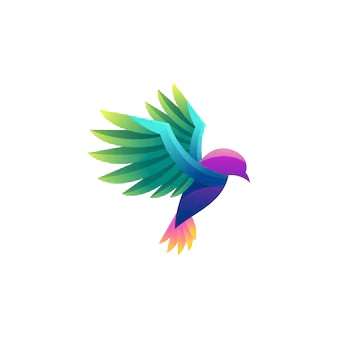
If you’ve spotted a tiny bird flitting through a bush or displaying a bright crest, you might be curious about what you’ve seen. This guide will introduce you to the ten smallest birds in the UK, helping you to identify these diminutive avians, from the well-known Robin to the elusive Firecrest.
- Goldcrest
- Scientific Name: Regulus regulus
- Lifespan: 6 years
- Size: 9 cm (3.5 in)
- Weight: 5 g (0.18 oz)
- Wingspan: 14-15 cm (5.5-5.9 in)
- Population: 610,000 breeding territories
- Status: Green
- Firecrest
- Scientific Name: Regulus ignicapillus
- Lifespan: 6 years
- Size: 9.3 cm (3.7 in)
- Weight: 6 g (0.21 oz)
- Wingspan: 14-15 cm (5.5-5.9 in)
- Population: 550 breeding territories
- Status: Green
- Wren
- Scientific Name: Troglodytes troglodytes
- Lifespan: 4 years
- Size: 9 cm (3.5 in)
- Weight: 7-12 g (0.25-0.42 oz)
- Wingspan: 16-18 cm (6.3-7 in)
- Population: 8-11 million breeding territories
- Status: Amber
- Goldfinch
- Scientific Name: Carduelis carduelis
- Lifespan: 2 years
- Size: 12-13 cm (4.7-5.1 in)
- Weight: 14-18 g (0.49-0.63 oz)
- Wingspan: 21-25 cm (8.3-9.8 in)
- Population: 1.2 million pairs
- Status: Green
- Coal Tit
- Scientific Name: Periparus ater
- Lifespan: 3 years
- Size: 11.5 cm (4.5 in)
- Weight: 9 g (0.32 oz)
- Wingspan: 18-20 cm (7-7.9 in)
- Population: 670,000-680,000 breeding territories
- Status: Green
- Marsh Tit
- Scientific Name: Poecile palustris
- Lifespan: 2-3 years
- Size: 12 cm (4.7 in)
- Weight: 11-14 g (0.39-0.49 oz)
- Wingspan: 18-20 cm (7-7.9 in)
- Population: 41,000 breeding territories
- Status: Red
- Willow Tit
- Scientific Name: Poecile montanus
- Lifespan: 2 years
- Size: 12 cm (4.7 in)
- Weight: 10-13 g (0.35-0.46 oz)
- Wingspan: 18-20 cm (7-7.9 in)
- Population: 3,400 pairs
- Status: Red
- Blue Tit
- Scientific Name: Cyanistes caeruleus
- Lifespan: 2 years
- Size: 12 cm (4.7 in)
- Weight: 11-13 g (0.39-0.46 oz)
- Wingspan: 18-20 cm (7-7.9 in)
- Population: 3,600,000 breeding territories
- Status: Green
- Robin
- Scientific Name: Erithacus rubecula
- Lifespan: 1.5-2 years
- Size: 12.5 cm (4.9 in)
- Weight: 16-22 g (0.56-0.78 oz)
- Wingspan: 20-22 cm (8-8.5 in)
- Population: 6,700,000 breeding territories
- Status: Green
- Long-tailed Tit
- Scientific Name: Aegithalos caudatus
- Lifespan: 3 years
- Size: 14 cm (5.5 in)
- Weight: 5-8 g (0.18-0.28 oz)
- Wingspan: 22-24 cm (8.7-9.4 in)
- Population: 340,000 breeding territories
- Status: Green
Conclusion
These ten tiny birds add charm and diversity to the UK’s avian population. Observing them in their natural habitats or at your bird feeder can be a delightful experience. By creating a bird-friendly environment with feeders, nest boxes, and native plants, you can help support these small wonders. Reducing pesticide use is also crucial, as insects are a primary food source for many of these birds. Enjoy watching these little birds bring life and color to your garden!
